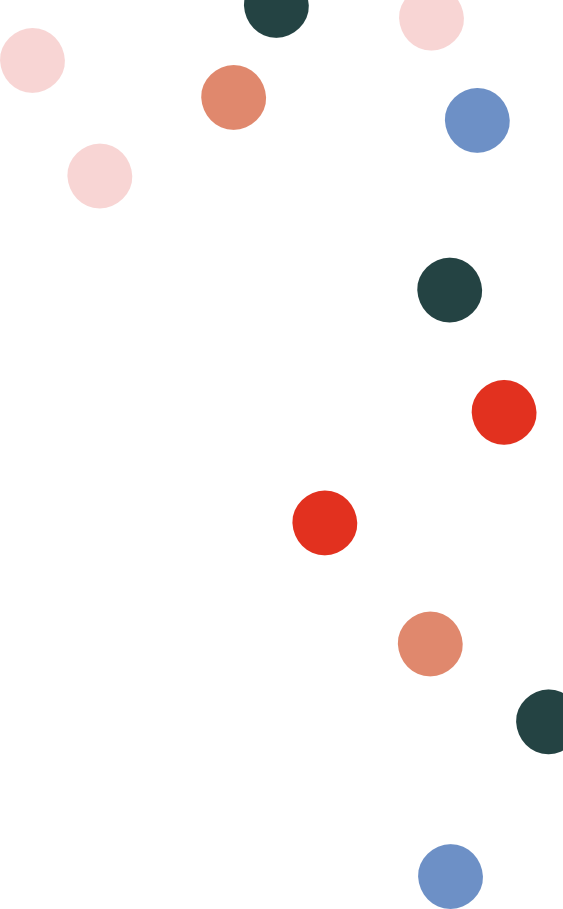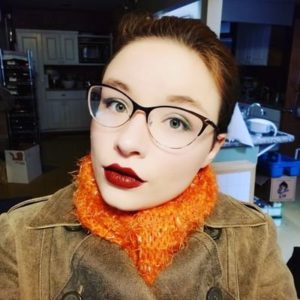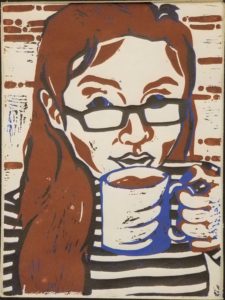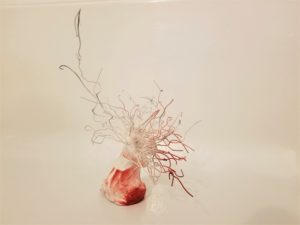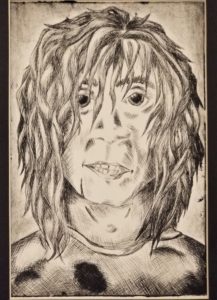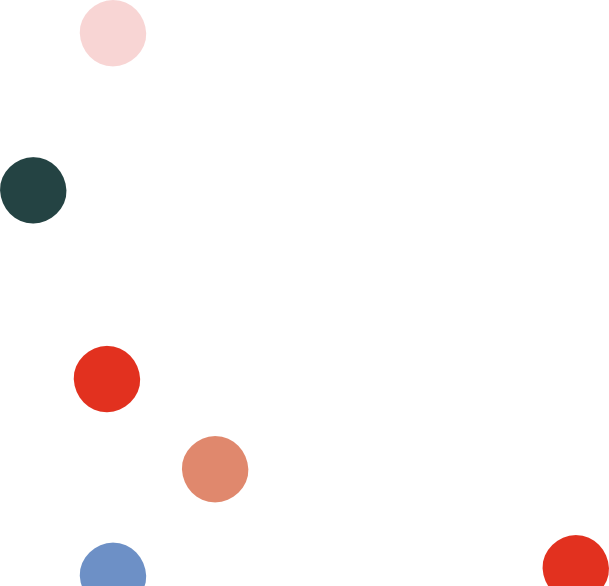Cordelia is an artist and writer studying in her fourth year at PSU, working toward a major in English Literature with a minor in Spanish.
Q: What is your favorite book?
A: I haven’t really had a favorite book for a long time, but there are books that resonate with me for a particular period of time in my life. One that consistently resonates with me is “The Name of the Wind” by Patrick Rothfuss, because his prose is incredibly well-crafted. A collection of short stories called “Enfermario” by Gabriela Torres Olivares, which is has both the original stories in Spanish and the English translations side by side, continues to move me. Olivares’ work is so visceral and beautifully unsettling.
Q: How does your daily life inspire your art?
A: I don’t know about inspiring, but I feel an inexplicable urgency to create almost every day. The raw emotions that I feel in reaction to daily events often overwhelm me. Writing allows me to take what I’m thinking and feeling and interact with those thoughts and emotions without worrying about finding an immediate solution. Sometimes I feel inspired by others’ love for and struggle with their art. Lately, I’ve been writing songs in reaction to streamed shows of people table-top role playing games like Critical Role and LA by Night. In any case, I think making art is more of an act of survival for me. As a result, feeling inspired may just be my preferred norm. I run into creative blocks, I take breaks, I live my life, but I always come back to art.
Q: How do you go about transforming an idea into a finished project?
A: That depends on what I’m doing. With writing poetry, it’s this strange push and pull where I write a phrase in reaction to a feeling and then I either explore the feeling further or I probe my brain, testing out rhyme, meter, figurative language, and mnemonics. I’ll go back and forth between those until it’s all out. Then I go back and edit for consistency, flow, feeling, and sensitivity. Writing fiction usually involves a long process of me writing, editing, getting feedback, and revising. With visual art, I start with a form or idea and keep working at it until it’s done or until my hands start hurting. With clay and foam and wire, I would often just dig into the feel of the medium and pay less attention to how it looked and more on the flow of the texture and form in my hands. In all my work, I think creating sense of shape, texture, and feeling is key to my process, even while exploring very abstract topics.
Q: Is it important that your art feels alive and in conversation with you?
A: For writing, yes. My writing focuses on having a dialogue with myself, with others, and sometimes even with itself. When I write poetry, while I do value my audience, I’m usually talking with myself about something I’m struggling to express or explore. My feelings towards visual art are less one-sided. While I do make visual art that’s emotionally visceral, it’s less imperative for me that I do so, and I often draw for fun without any intention of a piece being anything more than fun to make.
Q: What themes do you like to explore in your art?
A: With visual art, when I’m trying to explore something, it’s usually shape and texture and/or an aspect of darkness and pain. My sketches often center around characters I’ve read about or made and the pain they experience. I draw a lot of crying faces, people with scars, people who look rough around the edges. My poetry is an avenue for me to explore guilt, founded or unfounded. I often explore sexism and racism and how they affect the way things are read and how people are perceived. Lately, I’ve been exploring pain in the loss of little things. One of my most recent poems is an exploration of no longer being able to drink caffeinated coffee, which I grew up drinking almost every morning. I also often mix scientific concepts into my poetry, because I like to explore the poetics of science, especially as a human attempt to understand and interact with the universe. I love being able to bring that awareness to the table along with my knowledge of literature, history, and poetic devices.
